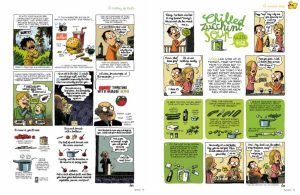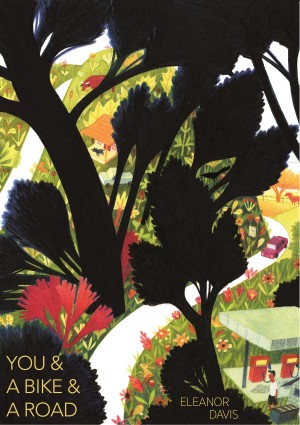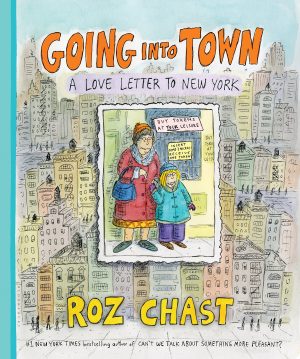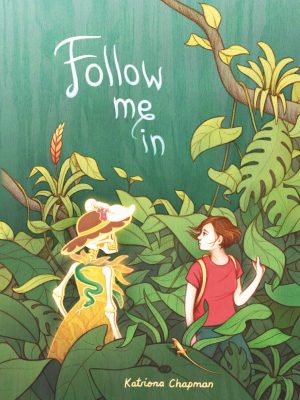Review by Ian Keogh
This is the third volume, but the beauty of To Drink and to Eat is that it doesn’t matter where you start with these collections of strips originally published in French newspaper Le Monde. Author Guillaume Long adores his food and drink, his enthusiasm is infectious, and his introduction concerning what he’d be if various items other than human is all you really need. Each volume is the same mix of advice, recipes, delights and tours, and while you’ll come to know Long a little better each time, it’s not necessary to start at the beginning. It’s not even necessary to start at the beginning of each volume, so just jump in with your boots on.
In the previous books Long’s made little distinction for individual taste. The right way is the way it tastes best to you, and there’s some acknowledgement of that here, such as the suggestion you experiment with different varieties of apple before deciding on the ideal ones for your apple crumble. That’s made in the fictional company of Robert Crumb, a joke that’s really forced. Maybe it’s better in French.
New to this volume are intrusions from the publisher, constantly wanting something more commercial. Long’s presumably satirising comments genuinely made, but repeating these appearances isn’t as funny as he thinks. The other downside is yet another travelogue. While Long is so good at conveying his gastronomic enthusiasm, his travelogues offer little more than brief diary entries to prompt Long’s memory in the future, so thirty pages in Madrid (or 20% of the book) stretches the patience. A culinary trip to Normandy investigating cider production is far better, informative and funny, although while Long claims to like wine critic Ophélie Neiman, she surely won’t be pleased with her presentation.
While this is a marginally weaker volume than the two beforehand, there’s still a wealth of joy and information alongside suggestions you’ll either find repulsive or curiously enticing. Mango salad with garlic anyone? A particularly inventive strip provides the apocalypse alongside a recipe for tagliatelle with truffles and foie gras. As before, the tips are immense and valuable. How to avoid tears when chopping an onion? Use a really sharp knife. That’s just one from three solid pages of tips midway through, and we also learn veal is only pale due to the confinement of the calf. It would be brown were the calf running free. British readers will learn rutabaga is actually swede.
Once again, a frustration for those wanting to try the offered recipes will be not being able to pick up so many of the items Long mentions, easily found in his home town of Lyon. On the other hand it’s possibly worth asking for cardoons, chervil or coquilles in Asda or Wal-Mart just to see the puzzled look on the staff’s face, while simultaneously despairing the paucity of choice.
Some jokes don’t translate well, but that’s inevitable, so ignore it and bathe in the warm glow of Long’s contagious exuberance and knowledge.





